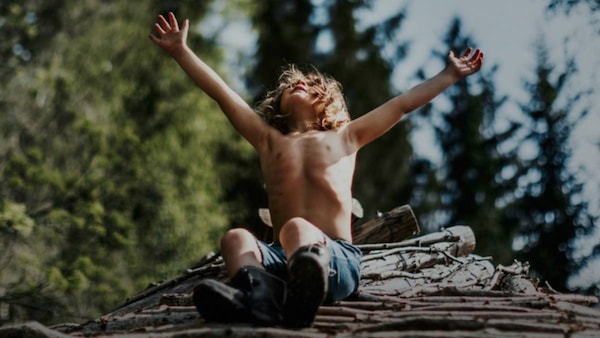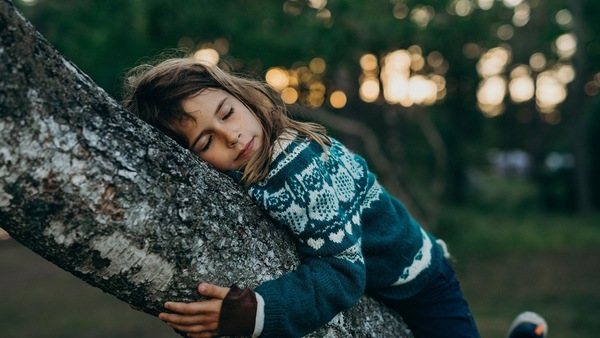Sundance 2024: A New Kind of Wilderness Is A Modest Masterpiece
Silje Evensmo Jacobsen’s A New Kind of Wilderness marries the glorious uncertainty of documentary filmmaking with the inglorious uncertainty of life.

Last Updated: 04.15 PM, Feb 06, 2024
This review is part of our critics' round-up of six of the best titles at the 2024 Sundance Film Festival.
***
IN Silje Evensmo Jacobsen’s A New Kind of Wilderness, the glorious uncertainty of documentary filmmaking marries the inglorious uncertainty of life. The first few minutes unfold like a cheery presentation for free and sustainable living. We see a multilingual family of six on a rural farm in a Norwegian forest. They grow their own food, drink water from trees, camp under the stars, and homeschool the kids. The voice-over belongs to Maria Vatne, ace photographer and freestyle matriarch — she speaks of their oneness with nature, and a genuine desire to limit their ecological footprint. The hippie-happy vibe is palpable. It’s 2014, the digitisation of Scandinavia is ripe. Their truth is stranger — and stronger — than fiction. This is the off-the-grid story Jacobsen sets out to follow; it’s an irresistible peg.
Suddenly, Maria’s voice goes silent. Pictures of her cancer gate-crash the soothing montage. The film then goes where life takes it, just as this family goes where grief takes them. Both abandon their initial intent and learn to embrace the art of derailment. At some point, the camera stops following and starts living. At some point, the people in it stop living and start following. British widower Nik — who left it all to ‘go wild’ with Maria — does not want to abandon his late wife’s philosophies. But he also can’t do it alone. It’s like a dream has been punctured: Doubts creep in, and Nik wonders if this ecological odyssey is crippling his children. A single-parent setup, both socially and financially, doesn’t feel as sustainable anymore. And Maria’s daughter from a previous relationship, the teen-aged Ronja, leaves to live with her biological father. When Nik is forced to sell the farm, the reduced family of four must navigate a strained comeback to civilisation: Dependence bleeds into their reality. Nik has to find a job and a purpose, while the kids are urged to attend school.

A New Kind of Wilderness unfolds like the sort of life that imitates fiction. The 2016 Sundance hit Captain Fantastic instantly comes to mind. The film starred Viggo Mortensen as the father in a survivalist American family that struggles to reintegrate into society after the death of the mother. Though the narrative arc is similar, the conflict of Jacobsen’s documentary is more self-contained. Nik’s friction is with the past; the camera doesn’t pretend to know what they’re thinking. He considers moving back to England because Norway no longer feels like home, but his children are against the idea. Ronja is on her own journey through grief; as the eldest, she spent the most time with her mother, and finds herself reacting differently to the loss than her younger siblings. She also finds herself channelling the spirit of her mother while grappling with the ghosts of who they were.

The remarkable thing about the documentary — much like the Mortensen film — is that it refuses to antagonize the civilisation they return to. If anything, it bats for a balance of choice and agency, suggesting that radical extremes of free living are not quite the answer. It also subverts our perspective of a modern-day escape. Thanks to cinema, most people read grief as an emotion that finds solace in the stark isolation of mountains and jungles. But the family here undertakes a reverse path — from isolation to proximity, from wildness to wilderness — in pursuit of a plausible future. They adapt to the geocultural needs of the human heart. There are moments that tease our perception of fish-out-of-water stories: Nik becomes a labourer to make ends meet; the kids are socially awkward at school; Ronja is a loner at school parties. But their ‘compromise’ slowly morphs into a settlement — one that’s at once sad and hopeful. No villainous relatives or welfare authorities force their move. The storytelling does not dwell on the moral anatomy of their situation. Instead, their autonomy adopts a more evolved identity — they get to feel on their own terms. They realise that failing Maria was never an option because they were succeeding her all along.

The camera plays a key role in such documentaries. Jacobsen’s presence over five transformative years shapes the language of the family. For instance, the communication between the children and Nik is very direct and disarming — they ask him the kind of clear questions that serve as an exposition device for the viewer. Their exchanges are laced with a sense of storytelling and context. Like “You might be from England, daddy, but remember we were born and raised in Norway” or “I miss Ronja, do you think she will be back?”. They speak like humans playing adult characters — an oddity that can be attributed to their secluded upbringing but also to the manner in which they’ve accepted the camera as one of their own. When one of them leaves a letter for a sibling, it reads like a climactic and poignant song lyric. This would usually feel too designed in most films, but it somehow reveals the vulnerability of a story that’s coming to terms with the semantic demands of life. They’re conditioned to be so precise that the film-making is afforded the space to be small, brief and still. It is, for all intents and purposes, a new kind of wordiness.
A New Kind Of Wilderness is the winner of the Sundance World Cinema Documentary Competition.
